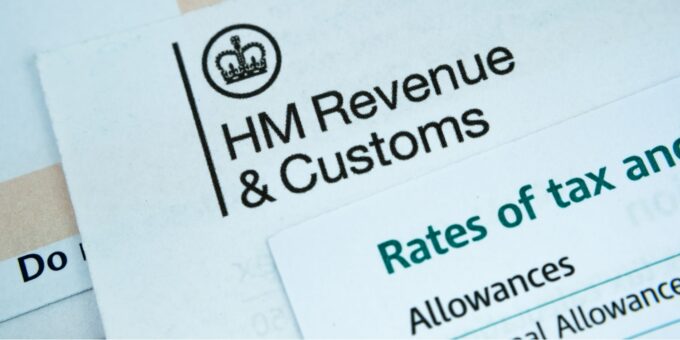Changes to Employment Allowance and employers’ National Insurance were some of the most significant updates in the 2024 Autumn Budget. After having promised not to hike taxes for working people, Chancellor of the Exchequer Rachel Reeves announced that UK businesses will pay more in employers’ National Insurance contributions (NICs) from April 2025. In addition, the threshold at which employers start paying National Insurance will drop by over £4,000.
Reeves also announced that businesses can claim more than twice as much in Employment Allowance to offset these rising payroll costs. However, as the new tax year approaches, small firms are urged to check whether they qualify for tax relief.
In this blog, we explain the tax changes coming into force for employers on 6 April 2025. We’ll also clarify the Employment Allowance eligibility criteria to help you determine whether this financial support is available to you.
Key Takeaways
- On 6 April 2025, the Employer’s National Insurance rate is rising from 13.8% to 15%. Employers will also start paying NICs sooner on each worker’s salary, starting at £5,000 (a reduction from £9,100).
- Employment Allowance is rising by more than 50%, and the £100,000 threshold is being removed, giving more small businesses access to significant tax relief.
- Single-director limited companies with no employees cannot claim Employment Allowance, and additional restrictions may apply. Small businesses should review their eligibility before the start of the new tax year to confirm they qualify for financial support.
Employment Allowance and Employer’s NI: what’s changing
National Insurance is a tax that entitles UK workers to a State Pension and certain benefits. It is paid partly by the employer and partly by the employee.
Currently, employers pay secondary Class 1 National Insurance contributions at a rate of 13.8% of a worker’s earnings above £175 a week (or £9,100 a year). From 6 April 2025, this will rise to 15%.
In addition, the threshold at which employers start paying NICs on an employee’s salary will drop significantly from £9,100 to £5,000 a year.
This was one of the hardest-hitting pieces of news for small and medium-sized enterprises (SMEs) in the Autumn Budget, as the cost of hiring new staff will increase tremendously, squeezing cash flow and margins.
To offset the higher NICs, Reeves also announced that certain businesses can claim more than twice as much in Employment Allowance. This tax relief is rising from £5,000 to £10,500 a year on 6 April 2025.
Eligible businesses and charities can currently claim Employment Allowance if their secondary Class 1 National Insurance liabilities were less than £100,000 in the previous tax year. This cap is also being removed on 6 April.
The financial impact on small businesses
The above tax changes could significantly increase payroll expenses for many businesses. To avoid this, some employers had paused recruitment immediately after the Autumn Budget announcement in October 2024.
However, the removal of the £100,000 restriction and increase in Employment Allowance will, in fact, help protect small businesses. The government estimates that over one million UK employers will either pay the same NICs or less than they did previously, and around 865,000 won’t pay any NICs at all in 2025/26.
Employment Allowance eligibility
With the current tax year coming to an end, we advise small businesses to prepare for the new tax rules by checking their eligibility for Employment Allowance. It’s vital to be prepared for these changes and understand how they will impact your company.
Who can claim Employment Allowance?
From April 6, 2025, businesses, charities, and care workers can claim Employment Allowance regardless of their national insurance bill total. Community amateur sports clubs (CASCs) are also eligible if the employer pays employer Class 1 NICs on employees’ or directors’ earnings.
You are also eligible if you’re part of a group of charities or companies (also known as connected companies). However, only one charity or company in the group can claim tax relief.
Here are some examples of limited companies that qualify for Employment Allowance:
- A single-director company with at least one other employee. The director’s earnings are below the secondary Class 1 NICs threshold, but the employee(s) earn more than the secondary threshold
- A company with two directors and both are paid above the secondary threshold
- A single-director company with no other employees (initially not eligible) becomes eligible by taking on a further employee who earns more than the secondary threshold
If you start the 2025/26 tax year with several employees earning above the secondary threshold, but your circumstances change during the tax year, and the director becomes the only employee liable for secondary Class 1 NICs, you’ll still be able to claim Employment Allowance for the whole tax year. However, you won’t be able to claim tax relief in the following tax year (unless the business becomes eligible again).
Who can’t claim Employment Allowance?
You cannot claim Employment Allowance if your company is public or conducting more than 50% of its business in the public sector (unless it’s a registered charity). This includes work with public authorities, educational institutions, and NHS services.
Also, please note that single-director limited companies with no other employees earning above the secondary NIC threshold are not eligible for Employment Allowance. Even if there are multiple employees and the director is the only employee earning above the secondary threshold, the company won’t qualify for tax relief. Here are some scenarios that don’t qualify for Employment Allowance:
- A single director earning more than the secondary threshold and there are no other employees
- A single director and at least one other employee, but only the director earns more than the secondary threshold
- Two or more directors, all earning below the secondary threshold, and there are no other employees
- Two or more directors, only one earning above the secondary threshold, and there are no other employees
- At least one director and at least one employee, but no one earns more than the secondary threshold
If you’re unsure if your company meets the qualifying conditions or you’d like to estimate your next National Insurance bill, please speak to a qualified accountant.
In summary
Generally, increasing the Employment Allowance and removing the £100,000 threshold will help ease payroll expenses for many small businesses. However, little attention has been paid to the Employment Allowance eligibility criteria, which could catch sole director limited companies out.
It’s vital to check whether you qualify for tax relief to protect your company ahead of the upcoming tax changes.
Thanks for reading. Please comment below if you have any questions, and we’ll reply. In the meantime, check out the Rapid Formations blog, where you’ll find more tax and finance advice for limited companies. If you would like to register a limited company, a good place to start is our Rapid Formations homepage, where you can check if your company name is available to use at Companies House.
Please note that the information provided in this article is for general informational purposes only and does not constitute legal, tax, or professional advice. While our aim is that the content is accurate and up to date, it should not be relied upon as a substitute for tailored advice from qualified professionals. We strongly recommend that you seek independent legal and tax advice specific to your circumstances before acting on any information contained in this article. We accept no responsibility or liability for any loss or damage that may result from your reliance on the information provided in this article. Use of the information contained in this article is entirely at your own risk.










Join The Discussion